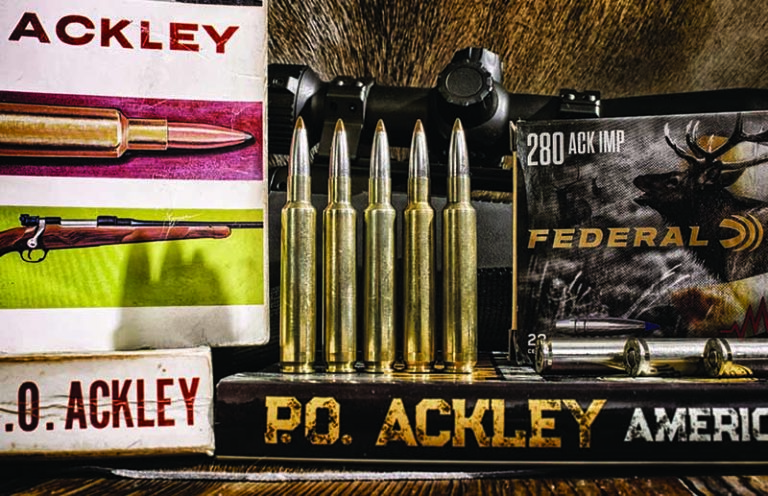
The sharp-shouldered .280 Ackley Improved came from humble beginnings, but has more than earned its place among the all-time great hunting cartridges.
The Namibian drought had taken a serious toll on the wildlife, as the grass was nearly gone. Among the various species, the springbok was, perhaps, best suited to these nearly impossible conditions. And there was no lack of springbok, numbering in the thousands. I had taken a good springbok on a previous safari, so the species wasn’t high on my list. But, when Professional Hunter Maré van der Merwe happened to glass a fantastic ram, my priorities immediately changed.
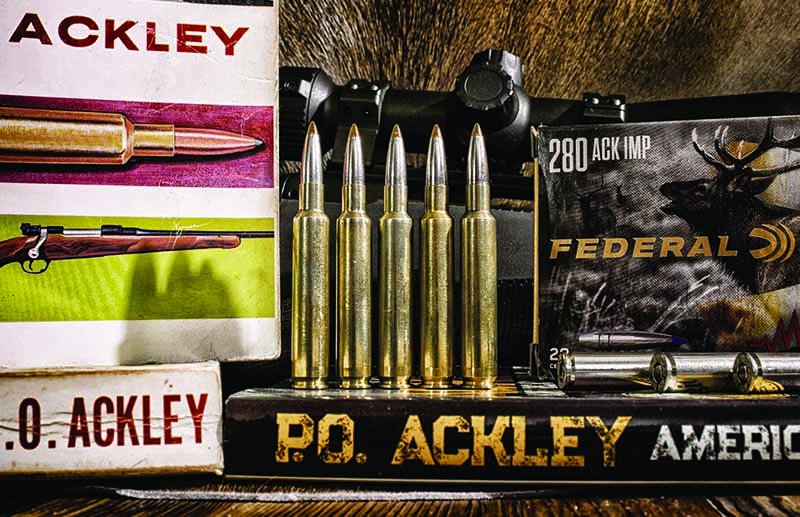
Impossibly tall, this springbok certainly stood out from the crowd. Frustrated by a lack of cover, Maré spread the sticks and informed me that 300 yards was the closest we could possibly get; there were too many sets of eyes to try to close the gap. I nestled the forend of the rifle into the crotch of the sticks, held for 6 inches of additional elevation and broke the trigger. I’m not sure which was louder, the sound of the 160-grain Federal Trophy Bonded Tip bullet striking the ram or the sound of the former-rugby-player-turned-professional-hunter slapping my back.
The cartridge used that day was another wildcat success story: the .280 Ackley Improved. The most popular of the line of cartridges, bearing the name of Parker O. Ackley, ballistician and gunsmith whose cartridge work has long been revered, the .280 Ackley Improved offers an improved performance over its parent cartridge, and comes very close to the performance of the 7mm Remington Magnum. In order to understand the history of the .280 Ackley Improved, we must start with the development of the .280 Remington.
.280 AI's Humble Beginnings
The U.S. Army’s new .30-03 Springfield—designed in 1903 to supersede the .30-40 Krag—used the same .473-inch rim diameter as the 7×57 and 8×57 Mauser cartridges, albeit with a longer case length (64.5mm versus 57mm). Just three years later, the fateful revision to the cartridge, in both case length and projectile choice, would give us the world-famous .30-06 Springfield. But it’d be the predecessor—the .30-03—which would serve as the parent case for the .270 Winchester, released in 1925. Thirty-two years later, Remington would use the same .30-03 case for their own cartridge, which would mate that case with 7mm bullets, resulting in the .280 Remington.

The head start that the .270 Winchester had didn’t help the popularity of the .280 Remington, and it seemed to slog along with a small, but fervent following, yet never approached the popularity of the .270 Winchester or .30-06 Springfield. This is unfortunate, because in my opinion the .280 Remington is one of the best designs of the era, as it has the case capacity to use the full gamut of 7mm bullets with great results.
The P.O. Effect
Parker Otto Ackley, known as P.O., was constantly tinkering with cartridges in an effort to improve their performance. He’d remove a considerable amount of body taper, and one of his trademarks was to increase the shoulder angle, all to provide additional case capacity for increased velocity. If there was a cartridge in production during his lifetime, odds are that P.O. gave it the Ackley treatment.
He played a huge role in the development of the .17-caliber cartridges, including the .17 Hornet (slightly different than the current configuration) and the .17 Bee. But, in spite of giving the Ackley Improved moniker to cartridges up and down the caliber spectrum, his most well-known improved cartridge—and the only one adopted as a commercial offering—is the .280 Ackley Improved.
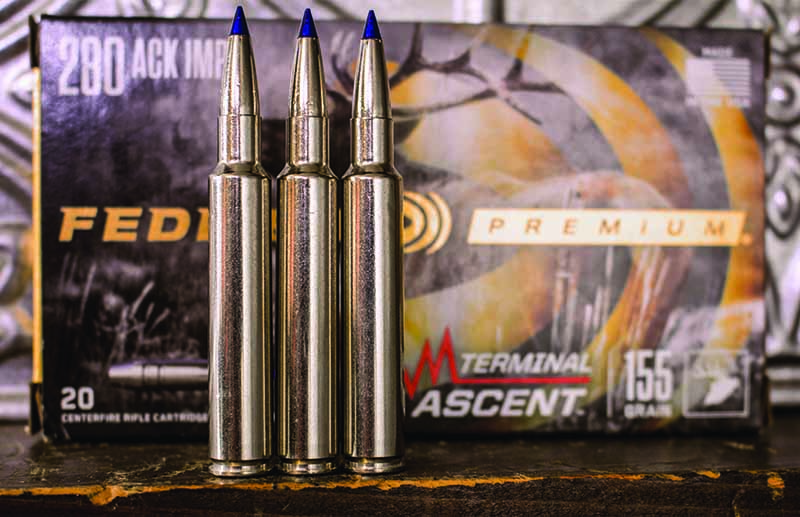
P.O. Ackley was experimenting with the 7mm-06 Mashburn (the .30-06 case necked down to hold 7mm bullets) before the .280 Remington was legitimized: He’d blown out the body taper and sharpened the shoulder, but had ceased his efforts as soon as the .280 was available commercially. He switched his focus to the .280 Ackley Improved, though Fred Huntington, father of RCBS reloading equipment, started that ball rolling with his .280 RCBS, with a 35-degree shoulder.
Ackley’s design used a 40-degree shoulder, and the .280 Ackley Improved was born, giving him a very slight improvement over the 7mm-06 Ackley Improved. P.O. Ackley did have some unique observations, which I find still hold true—for the most part—all these years later.
I first came across the .280 Ackley Improved as a youngster, when reading about Kenny Jarrett’s Beanfield rifles. I couldn’t afford a Jarrett rifle at that time—hell, I couldn’t afford to pay attention back then—but I didn’t forget about that cartridge. The .280 AI remains a staple in the Jarrett lineup, and it was Kenny Jarrett’s devotion to this cartridge that played a huge role in bringing it to the masses.

However, it was Nosler who, in 2007, brought the cartridge to SAAMI for approval and commercial production. There’s a slight difference between the wildcat chamber (and many older sets of reloading dies) and the SAAMI-approved chamber, so if you intend to reload for your .280 AI, make sure you obtain a modern set of reloading dies, designed for the SAAMI chamber.
Just What Is The .280 Ackley Improved?
“It will be quickly noticed that there is very little difference between the top velocities for the .280 Improved and the Magnums, plainly demonstrating that there is little advantage in using a belted Magnum case, for anything under .30 calibre,” states P.O. Ackley in Handbook for Shooters and Reloaders, Volume 1.
There’s no denying the popularity and effectiveness of the 7mm Remington Magnum, and it remains one of the most popular big-game cartridges in the field. However, P.O. Ackley was generating 7mm Remington Magnum velocities in his .280 Ackley Improved before Remington released its belted magnum in 1962.
Looking at modern ammo, you’ll see a slight velocity advantage for the 7mm Remington Magnum, but not more than 75 fps or so. I’ve seen the same results in handloaded ammunition as well, though the gap is smaller yet. The .280 Ackley Improved holds about 15 percent less water—depending on brand of case—than does the 7mm Remington Magnum, and avoids the case stretching associated with the belted cartridges. Considering that the body diameter of the .280 AI is much smaller than that of the 7mm Rem Mag, and the velocity differences are negligible, the .280 AI becomes very attractive.
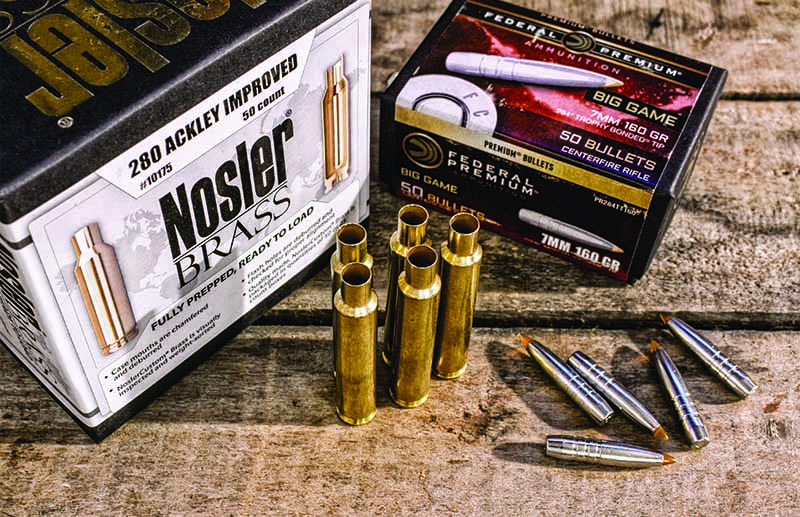
Comparing the .280 AI to the .280 Remington, the .280 Ackley Improved gives a velocity increase of between 50 and 125 fps in factory ammunition, and more than 100 fps in handloaded ammo, which is about par for the course; as Ackley stated, the velocity difference between the .280 Remington and the 7mm Remington Magnum is significantly less than that of the .30-06 Springfield and the .300 Winchester Magnum. The rimless .280 AI case, which uses the shoulder for headspacing, benefits from the steep 40-degree shoulder, and concentricity and accuracy can be enhanced if the ammunition is tuned to the rifle’s chamber.
As if those points weren’t enough to make the case for the .280 AI, you can safely shoot the more readily available .280 Remington ammunition from a .280 AI chamber in a pinch. In fact, that was the recommendation from Ackley himself for creating cases for his wildcat, long before they were commercially available.
My own .280 AI is a Savage Model 110 Long Range Hunter. For that gun, I settled on a 160-grain Federal Trophy Bonded Tip printing ½-MOA groups at a muzzle velocity of 2,965 fps (Federal’s factory ammunition for the 7mm Remington Magnum sends a 160-grain bullet at 2,950 fps).
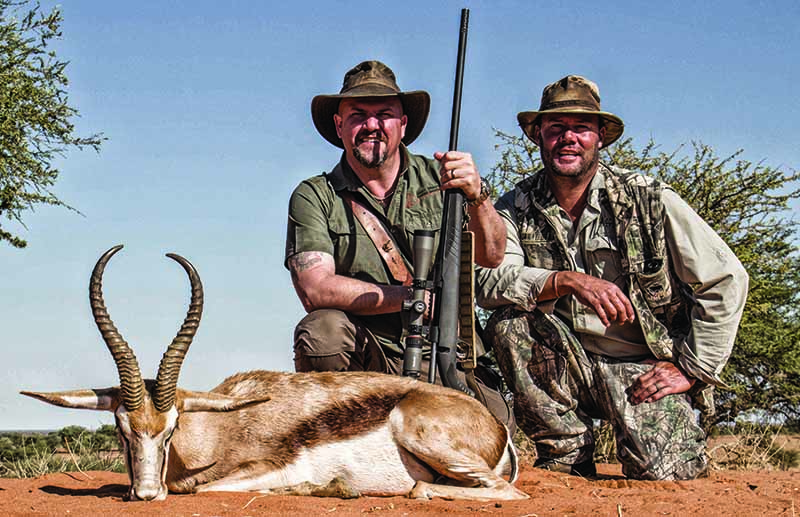
The cartridge proved to be a perfect choice for African plains game—of any species—and makes the same sound choice for the majority of North American game. Both its trajectory and energy are the equal of the 7mm Remington Magnum, or so close that no game animal could ever tell the difference, and anywhere you’d use the 7mm Rem. Mag. you could use the .280 AI.
Ammunition And Rifle Options
The factory ammunition options for the .280 Ackley Improved continue to grow each year. Nosler, who played such an important role in bringing the former wildcat to the masses, offers six different loads for the .280 AI. Their AccuBond is offered in 140-, 150- and 160-grain weights; the Partition is loaded at 160 grains and the Ballistic Tip and lead-free E-Tip at 140 grains. Hornady loads the 162-grain ELD-X in their Precision Hunter line at 2,850 fps, and Federal offers three different loads, including the 140-grain Trophy Copper Tip in the Meat Eater line, the 168-grain Berger Hybrid Hunter and their fantastic 155-grain Terminal Ascent bullet.
This gives the hunter choices between standard cup-and-core bullets in the Ballistic Tip, ELD-X and Berger Hybrid Hunter, lead-free monometal bullets in the Trophy Copper Tip and Nosler E-Tip and bonded core bullets in the AccuBond and Terminal Ascent.
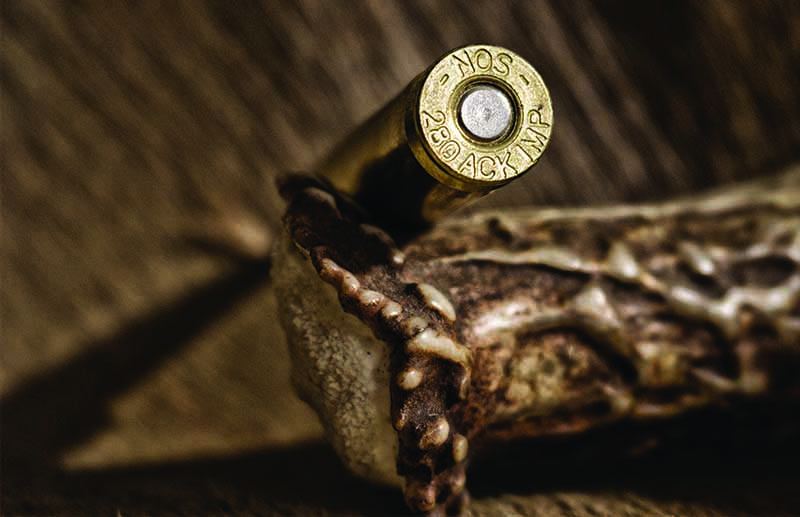
Savage still offers the Model 110 Long Range Hunter, but the company also chambers their Axis II, Axis II XP, Timberline, Storm and Ultralite in the .280 Ackley Improved. Ruger offered a limited run of their classic No. 1 single shot—commemorating Joe Clayton—and now the Ruger Hawkeye African is available in .280 AI. Kimber offers their Hunter rifle and Mountain Ascent, and Cooper offers their Model 52 Classic, Timberline, Backcountry and more so chambered; Bergara also offers their Premier Series Classic rifle in .280 Ackley.
On the more boutique side, Christensen Arms offers their Ridgeline in .280 AI. On the low side, the Savage Axis II has a street price of under $400, and on the higher side, the Christensen runs about $1,900, and the Coopers can break the $3,000 mark, so there are plenty of options for nearly any budget.
Legitimizing Ackley’s Efforts
Simply thumbing through his two-volume set Handbook for Shooters and Reloaders will demonstrate the level of dedication Parker Ackley had for cartridge and rifle development. The man had either developed or produced load data for a huge number of cartridges, many of which would go on to become commercial cartridges, even if it would take a few decades. His level of expertise, as well as his opinions on cartridges and ballistics, are very difficult to argue with, even though there have been definite changes in powder and projectile technology.
Had P.O. Ackley done nothing more than put a sharp shoulder on the .280 Remington, his name would still be noteworthy, but looking at the volume of work he produced, he’ll be revered among shooters for decades to come. Like Ned Roberts and Col. Townsend Whelen, Ackley put an indelible mark on the shooting industry—his .257 Roberts Improved, 7×57 Improved and .30-06 Improved are still in use by friends of mine—and I’m certainly appreciative of his efforts.
The article originally appeared in the March 2021 issue of Gun Digest the Magazine.
Raise Your Ammo IQ:
- Beyond The 6.5 Creedmoor: The Other 6.5 Cartridges
- The Lonesome Story Of The Long-Lost 8mm
- Why The .300 H&H Magnum Still Endures
- .350 Legend Vs .450 Bushmaster: Does One Win Out For Hunting?

![Best Concealed Carry Guns In 2025 [Field Tested] Wilson Combat EDC X9S 1](https://gundigest.com/wp-content/uploads/Wilson-Combat-EDC-X9S-1-324x160.jpg)


![Best 9mm Carbine: Affordable PCCs [Tested] Ruger Carbine Shooting](https://gundigest.com/wp-content/uploads/Ruger-Carbine-Shooting-100x70.jpg)
![Best AR-15: Top Options Available Today [Field Tested] Harrington and Richardson PSA XM177E2 feature](https://gundigest.com/wp-content/uploads/Harrington-and-Richardson-PSA-XM177E2-feature-100x70.jpg)

On your handloads what was your c.o.a.l please thank you oh my axis 2 shoots the 155 terminal ascent into 0.341 inch groups at 100yds. The box says 2930fps my axis 22″ barrel with 5r rifling averages 2915fps.
One caveat: “there are plenty of options for any budget” – if you’re right handed. For the 10+% of the populationthat are left handed, left eye dominant people like me, and the additional 30% of left eye dominant right handers, an increasing number of whom are discovering that they shoot better off the left shoulder, the prices start at an MSRP of $1,500 for the Savage 110 Ultralight. If your budget is more in the Axis II camp, you’ll have to buy an action and barrel and build it yourself.